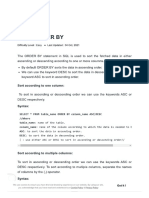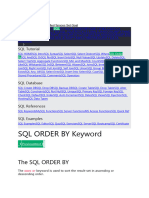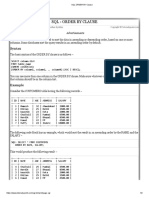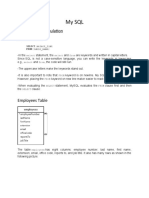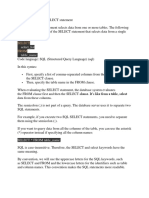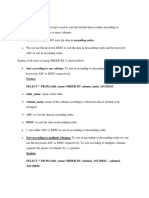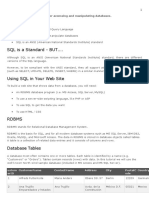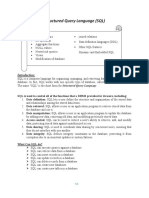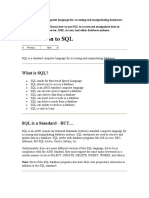0% found this document useful (0 votes)
31 views8 pagesBagian 2 Tutorial SQL
This tutorial shows how to use the SQL ORDER BY clause to sort query results by specified columns in ascending or descending order. The ORDER BY clause allows sorting query results by character, numeric, and date columns. Examples demonstrate sorting results by one or multiple columns.
Uploaded by
Alfie RidwanCopyright
© © All Rights Reserved
We take content rights seriously. If you suspect this is your content, claim it here.
Available Formats
Download as PDF, TXT or read online on Scribd
0% found this document useful (0 votes)
31 views8 pagesBagian 2 Tutorial SQL
This tutorial shows how to use the SQL ORDER BY clause to sort query results by specified columns in ascending or descending order. The ORDER BY clause allows sorting query results by character, numeric, and date columns. Examples demonstrate sorting results by one or multiple columns.
Uploaded by
Alfie RidwanCopyright
© © All Rights Reserved
We take content rights seriously. If you suspect this is your content, claim it here.
Available Formats
Download as PDF, TXT or read online on Scribd
/ 8

